Do you feel horrible pain when you straighten your knee under load? Hitting the gym after the pandemic and returning to a regular routine has been quite a dreadful transition for many people. They were used to sitting and lying down for long hours, very few maintained their mobility routine.
All of this put individuals on resting mode and demanded very little flexibility in their bodies.
Now returning to the gym, individuals have started to train vigorously to shed all the extra pounds they gained during the lockdown.
Recently the most common injury suspected in individuals is “Runner’s knee”.
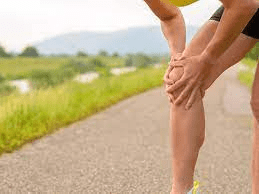
Runner’s knee is a broad umbrella term that describes pain at any number of locations and types of pain for one of several conditions that cause discomfort around the kneecap/patella region.
As the name suggests, Runner’s knee frequently occurs in runners in their running career. However, this injury is not limited to runners only. It is a common clinical condition that occurs in patients of all ages and activity levels.

Any strenuous activity that stresses the knee joint could be a cause of this condition. For instance, activities such as:
Skiing
Jumping
Playing basketball, football or cricket
Performing vigorous exercises in the gym
The pain of runner’s knee is felt anteriorly around the kneecap. It is characteristically dull aching pain above, below or behind the kneecap. Some patients experience swelling around the knee joint, and you may also feel cracking, popping or grinding feeling or sensation within the knee.
All of these symptoms are caused by irritation of soft tissue and lining around the knee. This indicates that you may have worn or torn cartilage and strained tendons.
Runner’s knee is often diagnosed as patellofemoral pain syndrome, patellar tendonitis, fat pad syndrome, iliotibial band syndrome and traction apophysitis.
In all of these conditions following symptoms are evident:
Pain
Inflammation
Muscle imbalance
Muscle instability of extensor component of the knee
Cause of alteration in biomechanics while running
There could be several musculoskeletal factors that lead to runners knees, such as;
Poor quadriceps and hamstrings flexibility
Weakness in glutes and hips
Poor biomechanics when running
Impaired calf strength
Limitation in hip extension strengthening
Tips to prevent knee pain while running
There are several reasons why your knees could be hurting. Without proper information and clinical diagnosis, we will be only guessing the general cause of knee pain.
Runner’s knee is a clinical entity in patients of all ages. However, there are specific measures that you can take to prevent knee pain during running.
Gradually increase training volume and intensity.
Follow the 10% rule; never increase your training volume and intensity by more than 10% per week. It’s a good rule of thumb across all sports, swimming, cycling, running and workout you are performing in the gym
In the beginning, you should run 3 or 4 times per week.
Give your body some days off to heal from soreness and DOMS.
Incrementally increase the duration in exercise if you are currently running 20 minutes at a steady pace, then the following week you’d run 25 minutes.
Try shifting from heel strike to midfoot strike.
Taking short quick strides help in maintaining a steady aerobic pace while running
Maintain good posture while running.
Try to improve your running form. Poor biomechanics while running causes anterior rotation of the pelvis
Look at your feet, do not overpronate them. Always go for shoes that have adequate stability and provide comfort for you.
Strengthen the muscles around the thigh, knee, and calf.
Work on hip and core strengthening.
If your glutes and hamstrings are tight, they shift the pelvis posteriorly, developing a slightly noticeable posterior tilt. This ultimately results in abnormal shifts in the orientation of the muscles.
Put a pillow in between your knees while sleeping.
How to run with knee pain?
You must be thinking that the internet is filled with articles saying don’t run with knee pain, and here I am discussing tips and tricks on how to run with knee pain. By just correcting your improper form and posture while running, treat pain quickly.
Well, first of all, abrupt cessation of any daily activity will affect your strengthened muscles badly. In our knees, we have muscles that are hypertrophied and muscles that are in their normal state. The excessive load-bearing is done by muscles that are increased in mass.
The imbalance in muscle occurs due to training error in intensity, volume and poor posture. Altering the intensity and reducing the number of days and exercises are helpful in treating pain equally. You can alleviate pain while running by;
Shortening stride length
Widening your gate (maintains normal Q angle)
Increase cadence
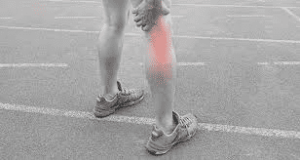
Running with pain in the adolescent.
The prominent cause of knee pain in adolescents is traction apophysitis or Sinding Larson Johanson disease. These conditions occur when excessive load is placed on the growth plates at the patella’s tibial tubercle and inferior pole, resulting in pain and inflammation around the knee joint.
Both conditions occur in patients who are undergoing a growth spurt. The pain shows a linear relationship with activity. Thus an increase in the activity increases the pain in the knee joint. It is tender and painful on palpation.
Simply reducing the load on soft tissues around the knee and incrementally increasing the load over a period of months give enough time to the tissues to heal. In addition to this, incorporating exercises in daily routine helps treat pain effectively.
Running with pain in adults.
If you feel a sharp shooting pain on the lateral side of the knee superior to the lateral femoral condyle, then it’s most likely to be a peripheral nerve entrapment. It is often misdiagnosed with iliotibial tract syndrome as the course of pain is along with the iliotibial band.
The pain of the nerve is differentiated based on the nature of pain, as the patient describes sharp, shooting and burning pain. Injury to the nerve is often associated with trauma or surgery. This sort of injury is primarily seen in ballet dancers.
Exercise and stretches to relieve knee pain while running
Straight leg raises
Lay down on the back (in supine position)
Bend the other knee
Raise the leg till end range
Increase range in every set
Perform 20 repetitions in 3 sets
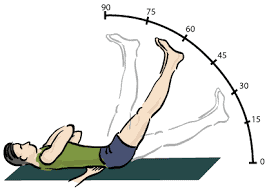
Straight leg raise with foot out
This is an alteration in the SLR to target vastus medialis muscle
Put your foot out in external rotation
Raise the leg till end range
Perform 20 repetitions in 3 sets
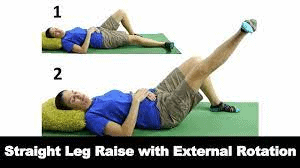
Hamstring stretch
Put a chair in front of you or a stool in front of you
Keep your back straight
Put your affected leg on a chair
Bend your hips forward
Perform 10 repetitions in 3 sets
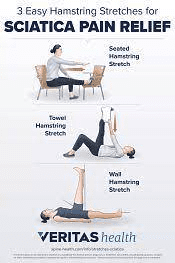
Quad stretch
Hold the chair with one hand for support
Take the unaffected leg and bend
Hold it in place for 10 seconds with your hand on the same side
Perform 10 repetitions in 3 sets.

Side-Lying hip Abduction
Turn into a side-lying position on the unaffected side
Bend the unaffected leg
Lift your affected leg up towards the ceiling and then back
Perform 20 repetitions in 3 sets

Hip hikes
Stand in a good posture
Lift your unaffected leg
Keep borg hands on your waist
With an affected leg move your hip up and down
Perform 10 repetitions in 3 sets
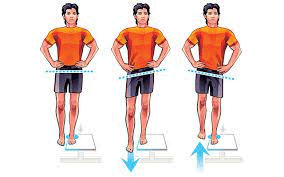
Box steps
Keep a box on the floor
Laterally step up and down on the box
Perform 10 repetitions in 3 sets
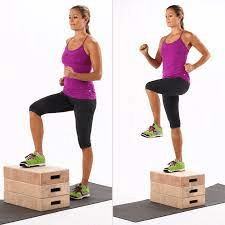
FAQs
Why do I feel pain in my knee after running?
If you’ve started running and recently feel a sharp pain in the middle of the run anteriorly in the, which eases upon cessation of running, then it could be Runner’s knee. The pain is usually felt anteriorly sound the kneecap or behind the kneecap.
Do I have tears in my meniscus?
The knee joint is a load-bearing joint. It deals with a lot of stress and weight on the joint. Knee pain can occur for various reasons; it could be Runner’s knee or a tear in the ligament, tissue or menisci of the knee. Your physician and physical therapist can only confirm the exact cause of knee pain diagnosis.
How long does it take my knee pain to heal?
It takes around 6 months to one year, depending on the injury of your knee.
Conclusion
The knee is a complex joint; it bears 80% of body weight. While running due to increasing mileage and fast pace aerobic activity stresses out the joint.
Many novice runners use improper biomechanics between limb and within limb while running.
With proper exercise according to your condition and type of pain and good know-how of your impaired biomechanics, this sports injury can be treated quickly.
